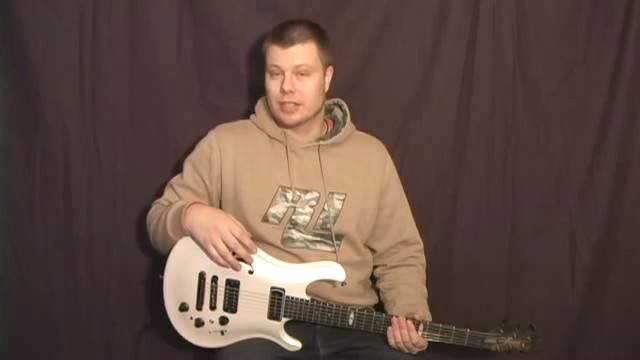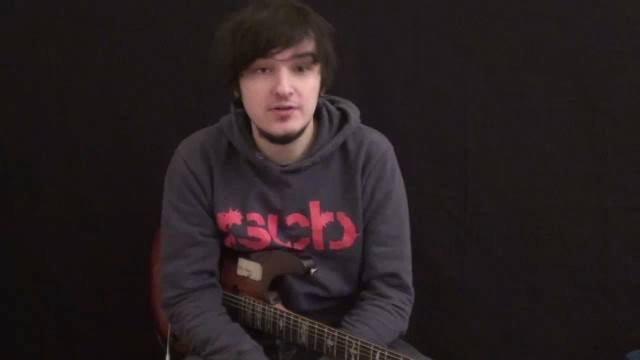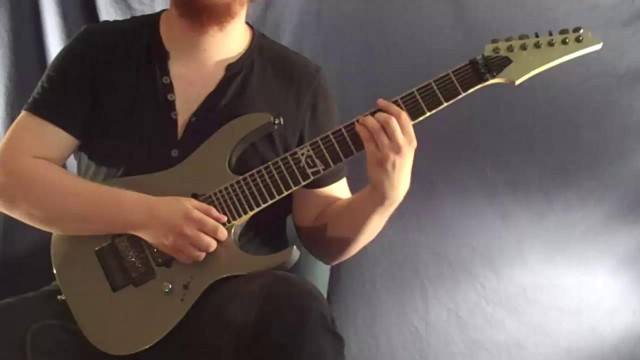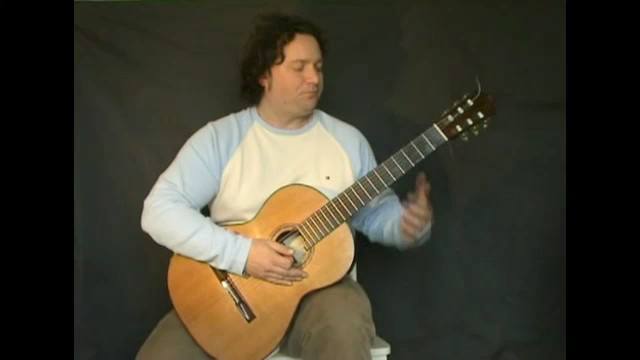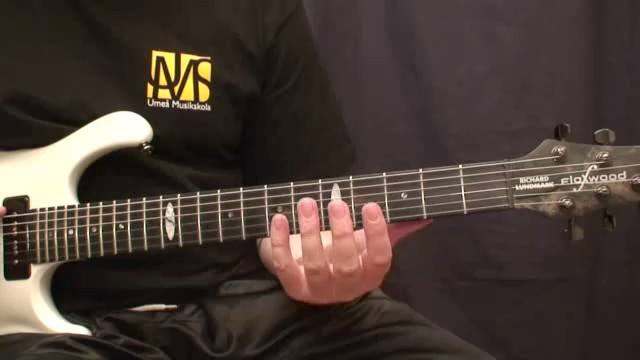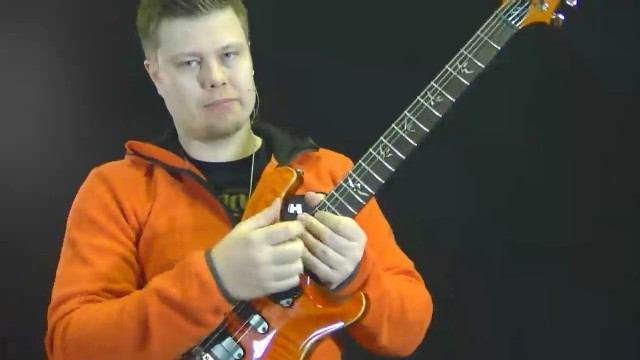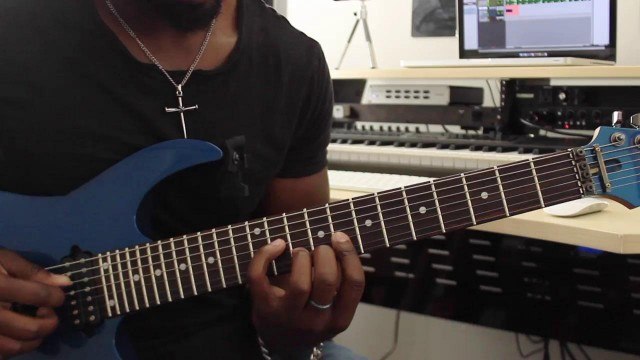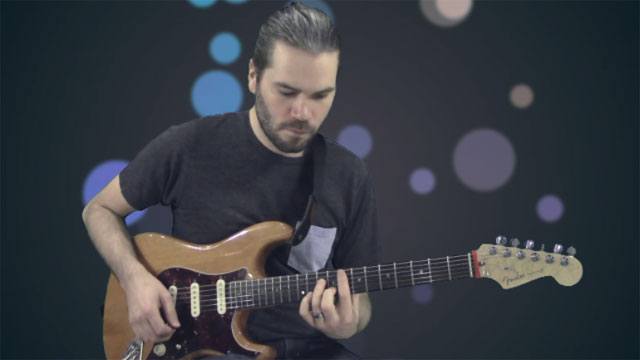I now bring you part 3, in which we will be going over 7th chords. We’ll just be dealing with the most common forms of the 7th chord for this lesson and as the original had done before, we’ll be going over these with the root on the A string but we will also be going over ones that have the root on the low E string, as well as the root on the B string, but this will still be in the key of C. As before, these can be moved all over the neck and in different keys.
The first chord we will be working on is the major 7th chord.(Chord #1-3) This chord, like the major chord contains the root (C), 3rd (E), and the 5th (G), but now we add on the major 7th to this triad which is (B), to create a major 7th chord. The formula now goes: (C-E-G-B) Intervalically, this chord can be seen as: (Root, Major 3rd, Perfect 5th and Major 7th.) As you can see, we have, starting on the A form, On the A string the root (C), on the D string the 5th (G), on the G string, we have the 7th (B), on the B string we have the 3rd (E). The major 7th E Form, we have the root (C) on the low E string, the 7th (B) on the D string, the 3rd (E) on the G string and the 5th (G) on the B string. To build this chord with the root starting on the B string we have this form built as: Root (C) on B string, 7th (B) on the G string, 3rd (E) on the D string and 5th (G) on the low E string.
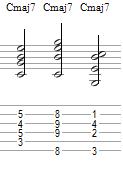
The next chord we will look at is the Major 7th flat 5. (Chord #4-6) This chord is built the same way as the Major 7th, except we are going to alter just the 5th and lower it one half-step to Gb so now the A form chord would be built as the root on the A string, the flat 5th on the D string, the 7th on the G string, and the 3rd on the B string. The E form chord would be built as the root on the low E string, the 7th on the D string, the 3rd on the G string, and the flat 5th on the B string. The B form chord would be formed as the root on the B string, the 7th on the G string, the 3rd on the D string, and the flat 5th on the low E string.
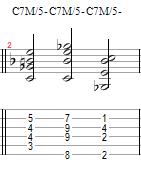
The next chord is going to be the Major 7th sharp 5 (Chord #7-9). This chord is like the Major 7th flat 5 as in we are going to alter the 5th, but instead of lowering it a half step, we are going to raise it a half step to G#. For the A form, take the major 7th chord of this form and raise the 5th on the D string one fret to G#. For the E form, take the major 7th form of this chord and raise the G on the B string to G# and for the B form, we take the original major 7th form we had before and just raise the 5th on the low E string up a fret to the G#
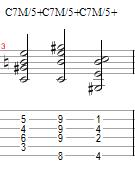
The next chord we will be looking at is the Dominant 7th chord (Chord #10-12), which is formed by taking the original Major 7th chord form and lowering the 7th one half step or a minor second down to a Bb, so now the formula will be: (C-E-G-Bb) Intervalically, this one can be seen as Root, Major 3rd, Perfect 5th, Minor 7th. For the A form of this chord, it’s a good idea to play this barring the notes on the 5th fret with your 1st finger which frees up your second finger and makes the chord easier to play. Starting with the root note on the A string this chord has the same note placement as the major 7th, but all we do is lower the B note on the G string one fret down to get the flat 7th. The E form of this chord is built the same way as the Major 7th, except we lower the 7th on the A string to Gb. The B form of this chord is built the same way as the Major 7th, except we lower the B on the G string one fret to Bb.
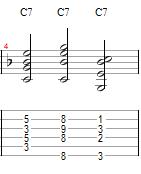
Now, to build a Dominant 7th flat 5 (Chord #13-15), we take the original Dominant 7th form we had before and we lower the 5th one half step or a minor second down to Gb, so now the formula for a Dominant 7th flat 5 chord 7th chord would go: (C-E-Gb-Bb). Intervalically, this chord is seen as: (Root, Major 3rd, Diminished 5th, Minor 7th) To build this for the A form, we take the original Dominant 7th form we had before, but lower the 5th one half step to Gb and just barre the first finger over the 3rd fret and use the second and 3rd fingers to play the Bb and the E. To build the E form, we take the original dominant 7th chord form we had before and move the G on the B string down one fret or a minor second to Gb. For the B form, we just take the Dominant 7th form of the chord and lower the G on the low E a fret down to Gb. It's just that simple!
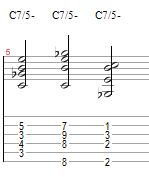
For the Next chord, we will look at the Dominant 7th Sharp 5 chord. (Chord #16-18) This chord is built from the original dominant 7th chord we had before but raising the 5th up a half-step to G#, so now we have the formula (C-E-G#-Bb) Intervalically, this can be seen as (Root, Major 3rd, Augmented 5th, Minor 7th) The A form of this chord is built from taking the Dominant 7th form of this chord form and raising the G on the D string up one fret up to G#. The E form of this chord is built from the original Dominant 7th chord form and raising the G on the B string up one fret to G# to give us our Dominant 7th sharp 5 chord. The B form of this chord is built by taking the original dominant 7th chord form and raising the the G on the low E string up one fret to G#.
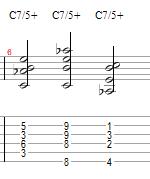
Continued In Part 2...



